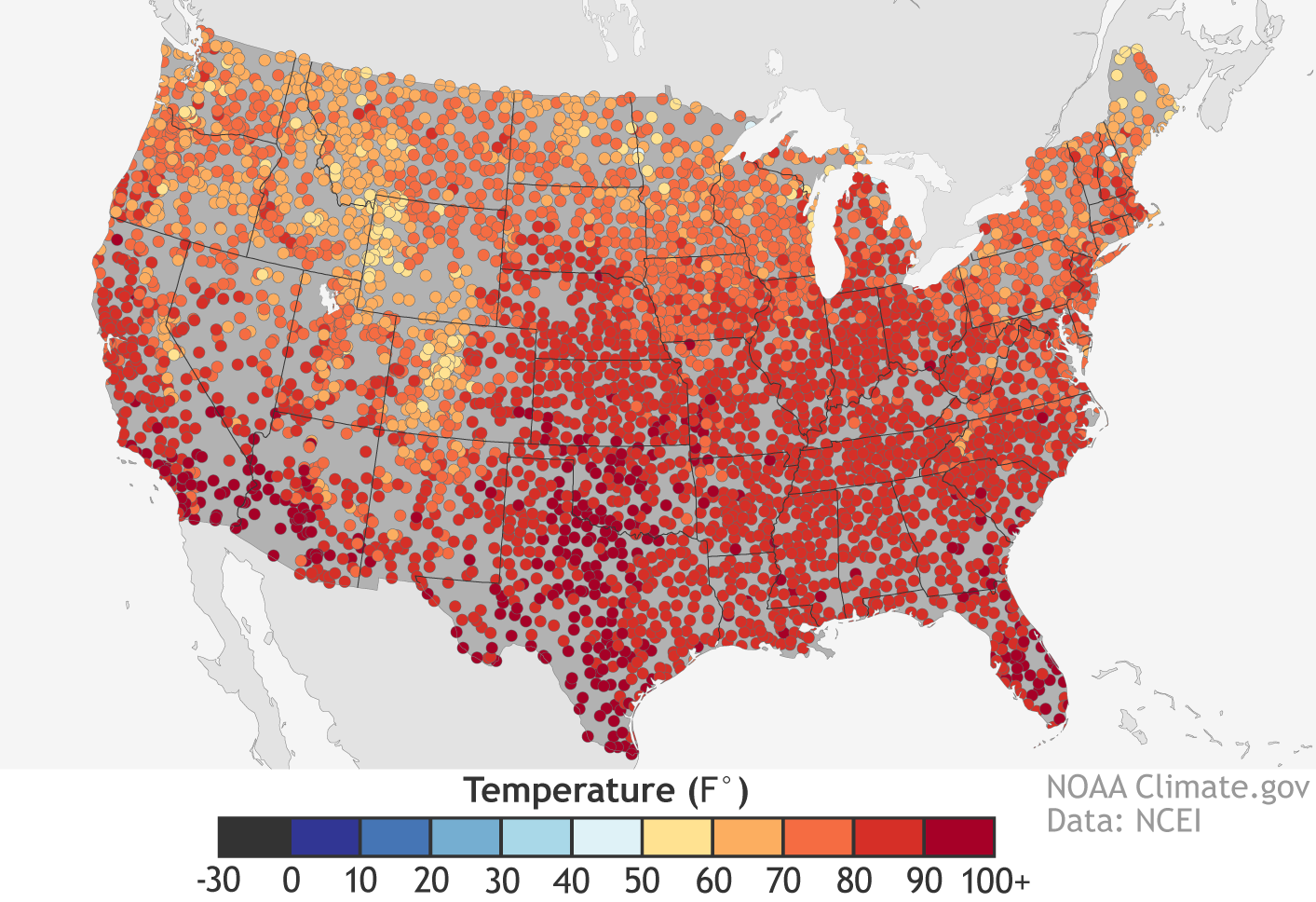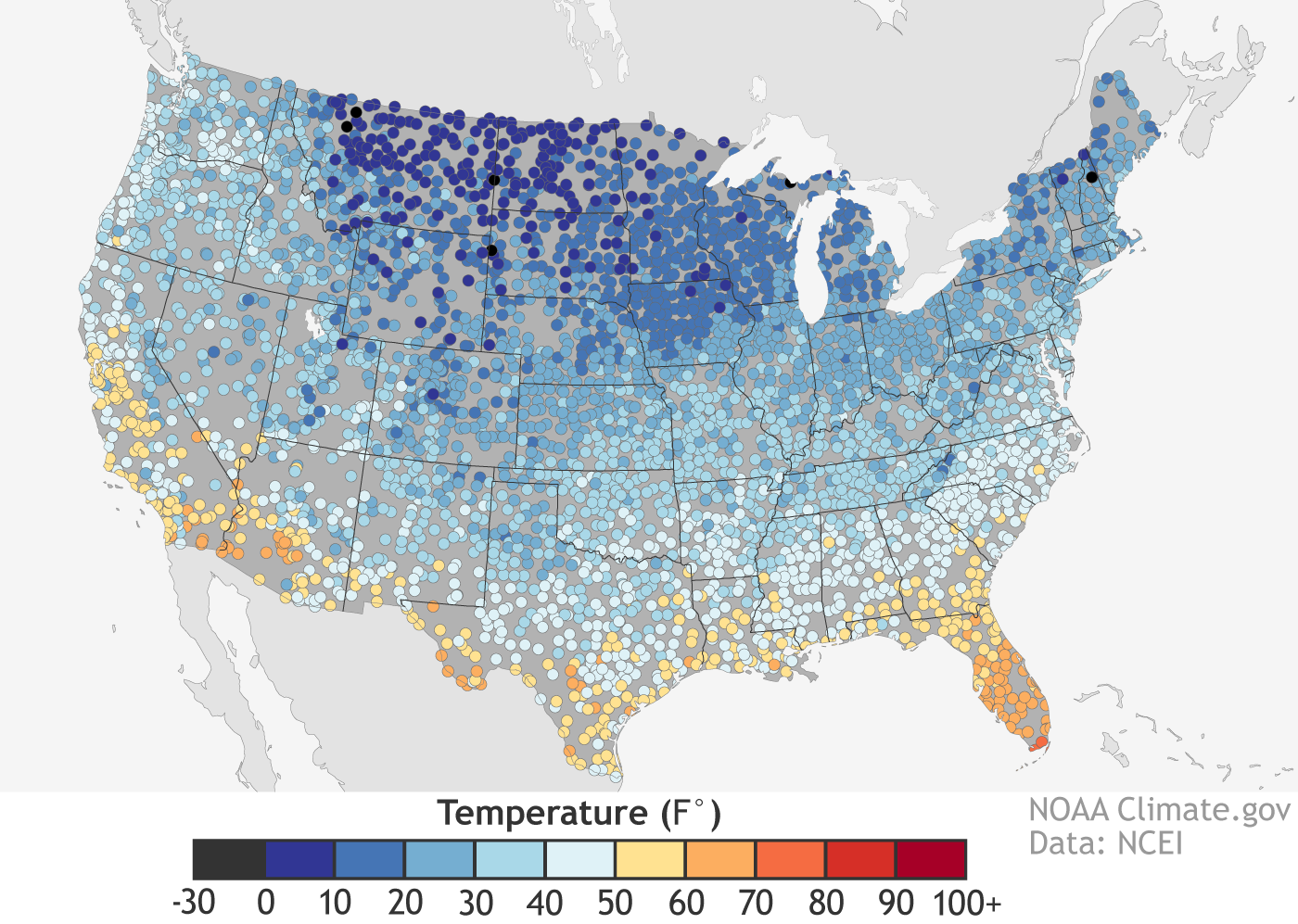Comparing the Coldest and Warmest First Days of Spring
 [Warmest first days of spring (March 19) recorded at thousands of U.S. locations. From NOAA Climate]
[Warmest first days of spring (March 19) recorded at thousands of U.S. locations. From NOAA Climate]
The maps show the warmest and coldest daily maximum temperature (“daytime high”) on March 19 for more than 4,000 U.S. locations within the Lower 48. The warmest first days of spring experienced by these U.S. locations are all 50°F or warmer, except for New Hampshire's Mt. Washington. Within the rest of the “CONUS” (the contiguous 48 states) we see only “warm” colors: yellows in the far Northeast and the mountains of the West where the warmest first day of spring was between 50-60°F; oranges in the Northern Plains, Pacific Northwest, and upper Midwest, where the warmest first day of spring ranged between 70-80°F. First days of spring with temperatures above 90°F are mostly confined to the southern Plains, the Southwest, and southern Florida.
The warmest first day of spring experienced by locations in the Lower 48 are at least 50°F, except for a few locations: New Hampshire's Mt. Washington; Clayton Lake, Maine; and two locations in the mountains at the Montana-Idaho border.There is greater variability in the coldest first days of spring than the warmest. In the northern Plains and Alaska, the coldest first day of spring at several locations was below 0° F (black dots). And most of the northern third of the country has experienced a first day of spring that was below freezing. Meanwhile, the coldest first day of spring experienced at the southern tip of Florida was above 70°F.
 [Coldest first days of spring (March 19) recorded at thousands of U.S. locations. From NOAA Climate]
[Coldest first days of spring (March 19) recorded at thousands of U.S. locations. From NOAA Climate]
To be included in this analysis, a station had to have at least a 30-year climate history spanning or overlapping the period 1981-2010, which is the most recent official climatological period recognized by the members of the World Meteorological Organization (WMO). More than 4,000 U.S. stations met this threshold. To learn more about how the Global Historical Climatology Network daily data are compiled, visit the National Centers for Environmental Information’s info page. Data analysis provided by Jared Rennie, from the North Carolina Institute for Climate Studies, a NOAA Cooperative Institute.